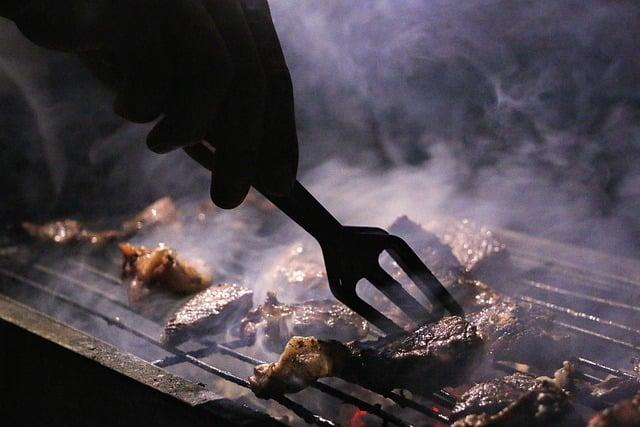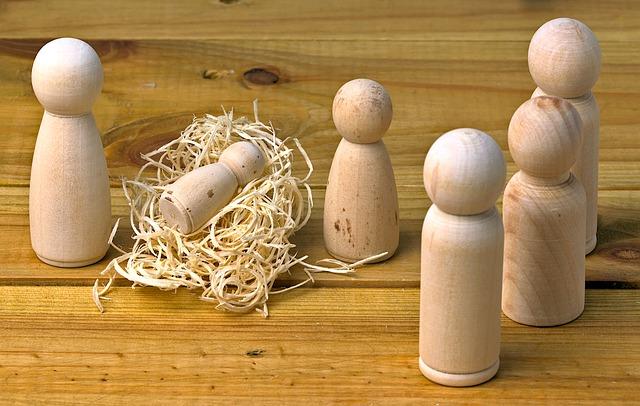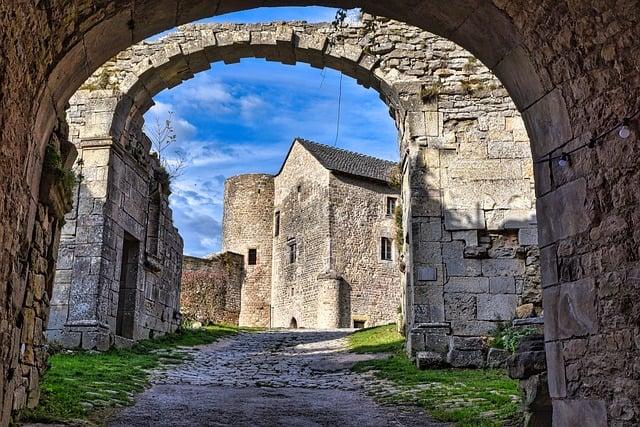In a bustling medieval village, the air was thick with the scent of roasted meats and spiced pies as Christmas approached. Families gathered around long wooden tables, their hearts warmed by flickering candlelight. The feast began with a grand boar, its crispy skin glistening, surrounded by platters of peacock and venison. Sweetmeats and honeyed fruits adorned the table, while mulled wine flowed freely. Children delighted in marzipan shapes, their laughter mingling with the crackling fire. On this night, the spirit of togetherness was the true feast, binding the community in joy and gratitude.
Table of Contents
- Exploring the Festive Feast: Traditional Dishes of Medieval Christmas
- The Role of Seasonal Ingredients in Medieval Yuletide Celebrations
- From Roasted Meats to Sweet Treats: A Culinary Journey Through Christmas
- Feasting with Purpose: The Cultural Significance of Christmas Meals in the Middle Ages
- Q&A

Exploring the Festive Feast: Traditional Dishes of Medieval Christmas
During the medieval period, Christmas was a time of great celebration, marked by a lavish spread of food that reflected the season’s abundance. The festive table was often adorned with a variety of meats, showcasing the wealth and status of the host. **Roast peacock**, a symbol of opulence, was sometimes served whole, its feathers arranged to create a stunning centerpiece. Other popular meats included **roast boar**, which was often seasoned with spices and served with a rich sauce, and **venison**, prized for its flavor and rarity. Additionally, **poultry** such as geese and swans were common, often stuffed with fruits and nuts to enhance their flavor.
Alongside the meats, medieval Christmas feasts featured an array of side dishes and desserts that delighted the palate. **Pies** filled with fruits, nuts, and spices were a staple, with **mince pies** becoming particularly popular, symbolizing the gifts of the Magi. **Pottage**, a hearty stew made from grains and vegetables, provided sustenance and warmth during the cold winter months. Sweets were also an essential part of the celebration, with **gingerbread** and **marzipan** figures crafted into festive shapes. To wash it all down, **spiced wines** and **wassail**, a warm, spiced cider, were served, inviting guests to toast to health and happiness in the coming year.

The Role of Seasonal Ingredients in Medieval Yuletide Celebrations
During the medieval period, the celebration of Christmas was deeply intertwined with the availability of seasonal ingredients, which played a pivotal role in the festive feasts. As winter settled in, the harvest season had come to an end, and the pantry was stocked with preserved foods. **Root vegetables** such as carrots, parsnips, and turnips became staples, providing sustenance during the cold months. Additionally, **cured meats** like ham and bacon were often featured, as they could be stored for long periods. The use of spices, which were both a luxury and a symbol of wealth, transformed simple dishes into extravagant meals, with **cinnamon, cloves, and nutmeg** adding warmth and flavor to the festive fare.
Moreover, the medieval Christmas table was adorned with a variety of **seasonal fruits and nuts**, which were not only a treat but also a sign of abundance. **Dried fruits** such as figs, raisins, and dates were commonly used in pies and puddings, while **nuts** like walnuts and hazelnuts provided a crunchy contrast to the softer textures of the dishes. The centerpiece of many feasts was the **roasted boar**, a symbol of strength and prosperity, often accompanied by a rich gravy made from seasonal herbs. These ingredients not only nourished the body but also celebrated the spirit of the season, reflecting the medieval belief in the importance of community and gratitude during the darkest days of winter.

From Roasted Meats to Sweet Treats: A Culinary Journey Through Christmas
During the medieval period, Christmas feasts were a grand affair, showcasing an array of dishes that reflected both the season and the social status of the host. The centerpiece of many tables was often a **roasted meat**, which could include anything from a succulent boar to a tender goose. These meats were typically seasoned with a blend of spices, such as **pepper, cinnamon, and cloves**, which were highly prized and often imported from distant lands. Accompanying the meats were hearty sides, including **root vegetables** like carrots and parsnips, as well as **pottage**, a thick stew made from grains and legumes that provided sustenance for the masses. The use of **sauces** made from fruits and herbs added a touch of sweetness and complexity to the savory dishes, creating a delightful contrast that was much appreciated by the diners.
As the feast progressed, the focus shifted from savory to sweet, with an impressive array of **desserts** taking center stage. **Minced pies**, filled with a mixture of dried fruits, spices, and sometimes even meat, were a popular choice, symbolizing the rich bounty of the season. **Marzipan**, a sweet almond paste, was often shaped into festive figures, while **gingerbread** became a favorite for its warm spices and delightful aroma. Other treats included **tarts** made with seasonal fruits, such as apples and pears, and **custards** flavored with vanilla and nutmeg. These sweet delights not only satisfied the palate but also served as a reminder of the joy and abundance that Christmas brought, making the culinary journey through the holiday a truly memorable experience for all who gathered around the table.

Feasting with Purpose: The Cultural Significance of Christmas Meals in the Middle Ages
During the Middle Ages, Christmas meals were not merely about sustenance; they were a vibrant tapestry of cultural significance, reflecting the values and traditions of the time. Feasting was a communal activity, often involving large gatherings of family and friends, where the act of sharing food symbolized unity and goodwill. The tables were laden with an array of dishes that showcased the season’s bounty and the wealth of the host. Commonly featured items included:
- Roasted meats such as boar, goose, and peacock, often adorned with spices and fruits to signify abundance.
- Rich pies filled with game or fish, representing the culinary creativity of the era.
- Spiced wines and ales, which were essential for toasting and celebrating the festive spirit.
- Sweet treats like marzipan and honey cakes, symbolizing the joy and sweetness of the holiday season.
The preparation of these meals was steeped in ritual, often beginning weeks in advance. Households would engage in the practice of fasting leading up to Christmas, making the feast a much-anticipated event. This period of abstinence heightened the enjoyment of the lavish spread, as it was not just about the food itself but also about the spiritual significance of breaking bread together. The inclusion of certain dishes was also influenced by local customs and the availability of ingredients, making each Christmas meal a unique reflection of the region’s heritage. Thus, the Christmas feast became a celebration of both the physical and spiritual nourishment that defined medieval life.
Q&A
-
What types of meat were commonly eaten during Christmas in medieval times?
Medieval people often enjoyed a variety of meats during Christmas feasts, including:
- Roast beef
- Pork
- Goose
- Venison
These meats were often prepared with rich sauces and spices, reflecting the festive nature of the occasion.
-
Were there any special dishes associated with Christmas?
Yes, several special dishes were prepared for Christmas, such as:
- Minced pies, filled with a mixture of meats and dried fruits
- Plum porridge, a hearty dish made with grains and dried fruits
- Various types of pastries and cakes, often decorated for the holiday
These dishes were not only delicious but also symbolized abundance and celebration.
-
What role did spices play in medieval Christmas meals?
Spices were highly valued in medieval cuisine, especially during Christmas. They were used to:
- Enhance the flavor of meats and sauces
- Preserve food
- Add a sense of luxury and festivity to the meal
Common spices included cinnamon, cloves, and nutmeg, which were often associated with the holiday season.
-
Did medieval people have desserts for Christmas?
Absolutely! Desserts were an important part of the Christmas feast. Popular options included:
- Fruit tarts
- Spiced cakes
- Sweet breads
These treats were often made with seasonal fruits and nuts, celebrating the harvest and the joy of the season.
As the festive season unfolds, we glimpse into the medieval banquet, where flavors of tradition and celebration intertwined. From roasted meats to spiced treats, Christmas meals were a tapestry of culture and community, reminding us of the joy in sharing.




